Creating your own laminated Muni Bus Stop signs
How to assemble a Muni bus stop sign!
Here's the short version: find the bus stop ID, enter it on our sign generator website, print it out, then assemble & post. Our recommended assembly method, covered in this article, involves laminating the prints and taping them to plastic sign board. This is a good balance of durability and ease of construction. You can also just print and tape directly onto the bus stop pole, an easy but sometimes less durable or less visible option. Every sign helps!
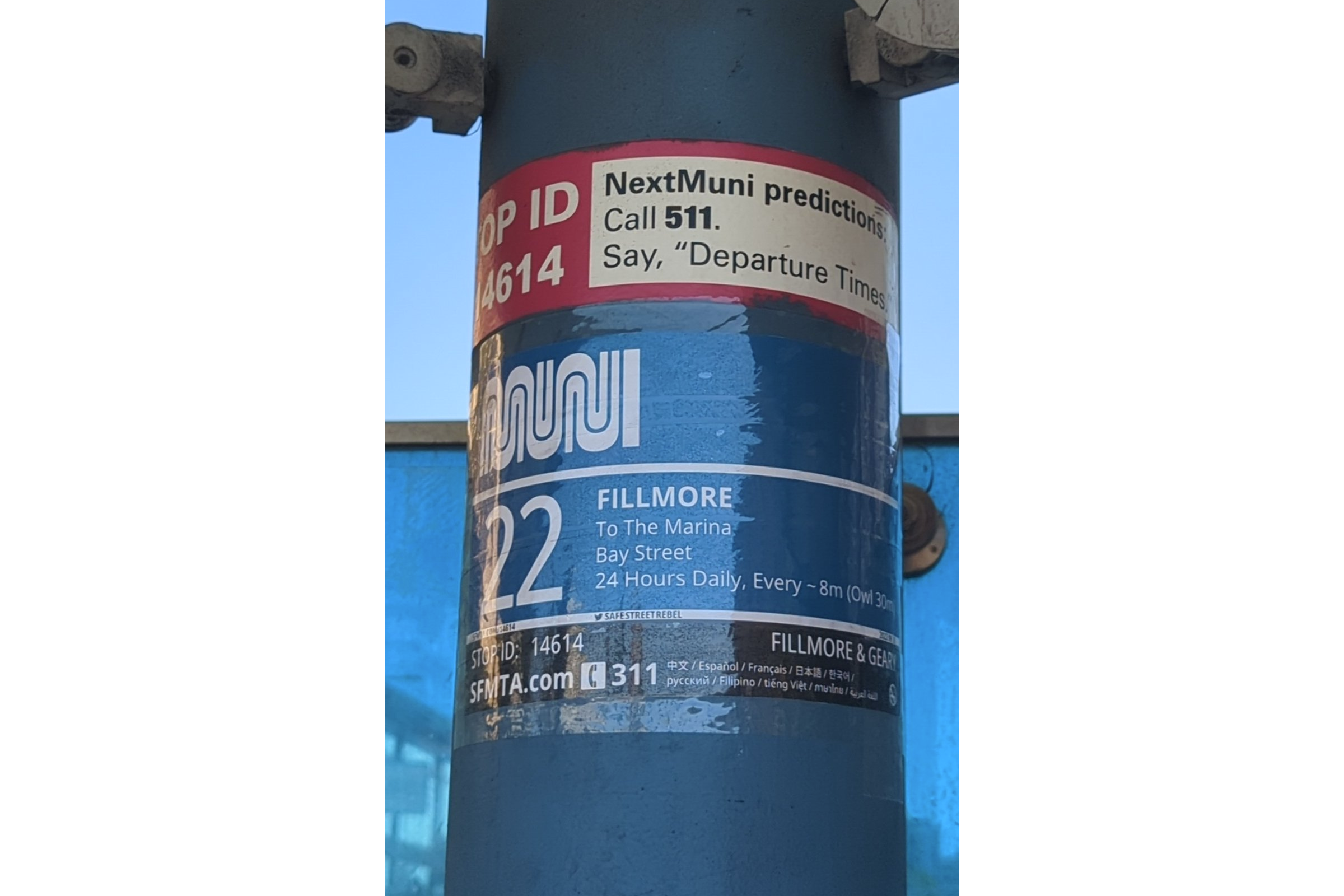
Supplies needed:
- Access to a (ideally color) printer or a library card. 2 pages per sign.
- Access to a laminator. 2 letter-sized lamination envelopes per sign.
- Zip ties
- Corrugated plastic sign or similar weather-proof board.
- Something to poke holes in the corrugated plastic
- Clear packing tape
Note that all these steps don't need to be done by the same person.
Step 1: Identify candidate stops.
A lot of bus stops in SF are very poorly marked. If you don't often take transit in SF, it can be very hard to start, because you can't find the stops you want to begin with. For instance, this bus stop is basically invisible.
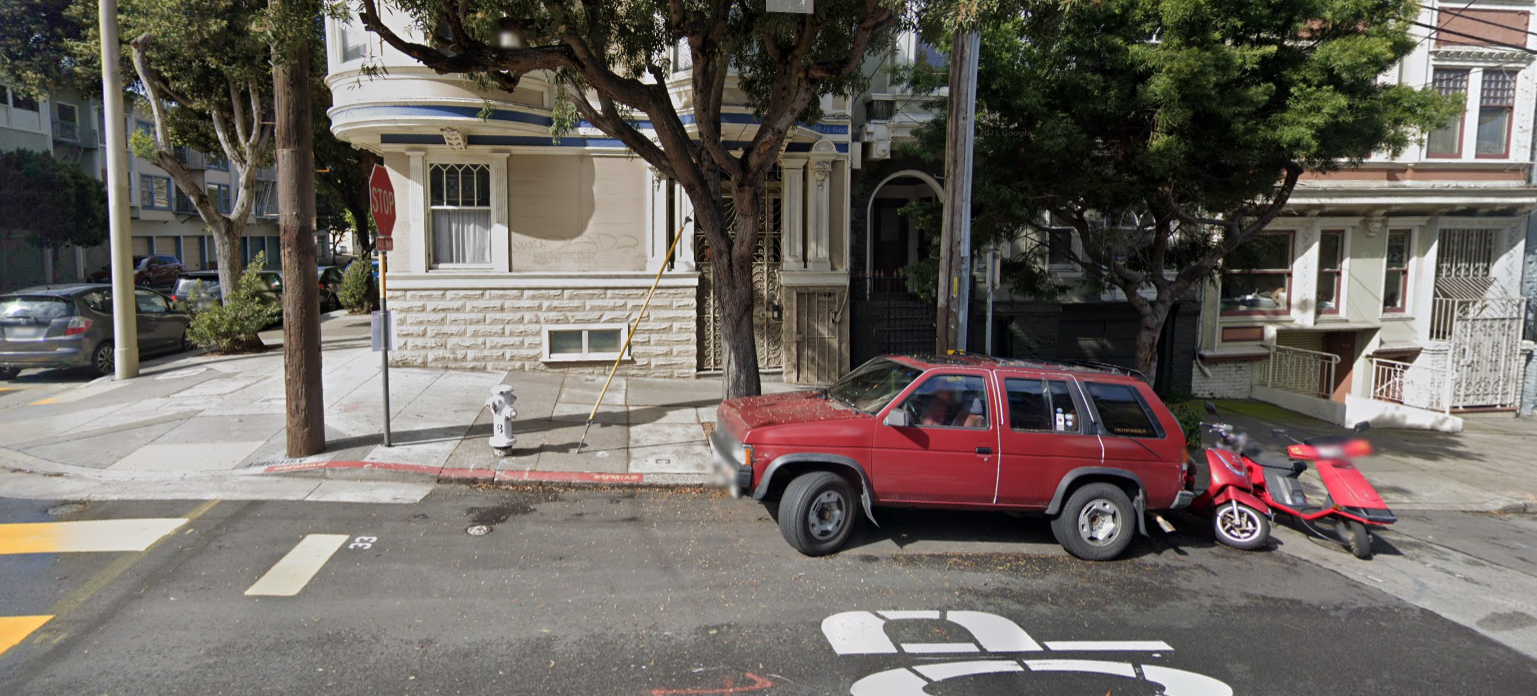
We're also keeping a list of badly marked bus stops and which ones we're adding signs to, so get in touch!
Step 2: Create the file for printing.
Find the bus stop's stop ID. The easiest way to do so is probably with this website: https://www.sfmta.com/find-a-stop. Also see Identifying a Muni Stop ID for more information. Make sure to double check the ID and make sure you have the right direction.
Once you have the stop ID, go here to generate the sign: https://munisign.org/
Step 3: Print
Print out the sign. Official signage is ~16 inches wide, so you can match that by printing across two sheets of paper.
It's best to print in color. If you have a SFPL library card, you can print 5 color pages a day for free, so 2.5 of these signs. If you want to do it in a larger quantity, it might be helpful to find someone with a color printer who is willing to help.
Step 4: Trim and Laminate
This is probably the biggest barrier to entry. You can buy a basic laminator at office supply stores or online for around $30, but if you can get enough people involved in this project, you might find someone who already has one.
Trim the extra paper first, then laminate, then trim the laminated plastic to leave a bit of a border so that the paper is protected from the weather. You can do this with scissors, but a paper cutter makes it easier.
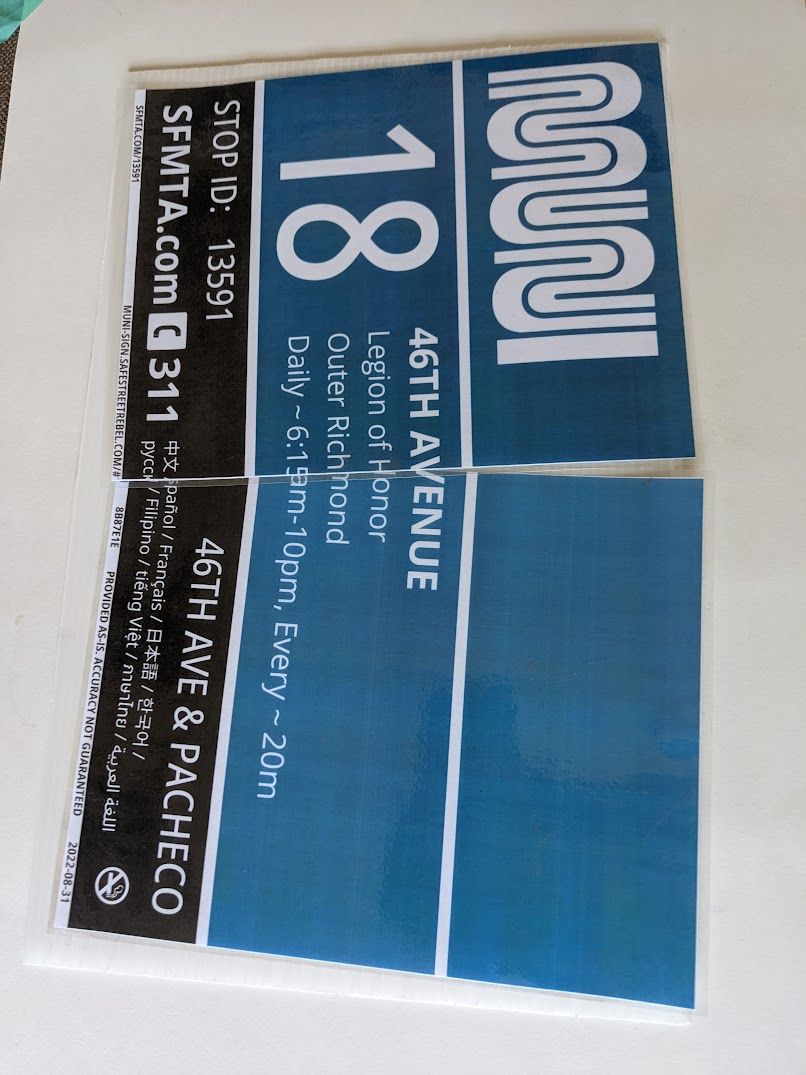
Step 5: Assemble the sign
Get a piece of corrugated plastic a bit bigger than the two pieces of paper you will attach. 18 x 12 inches should be about the right size. If you need to cut it to size, it's a lot easier to cut in the same direction as the corrugated lines.
Poke 2 holes at the top and 2 at the bottom, centered. Each pair of holes should be no farther apart from either side than the width of the pole you'll attach to. This helps prevent the sign from splitting or bending.
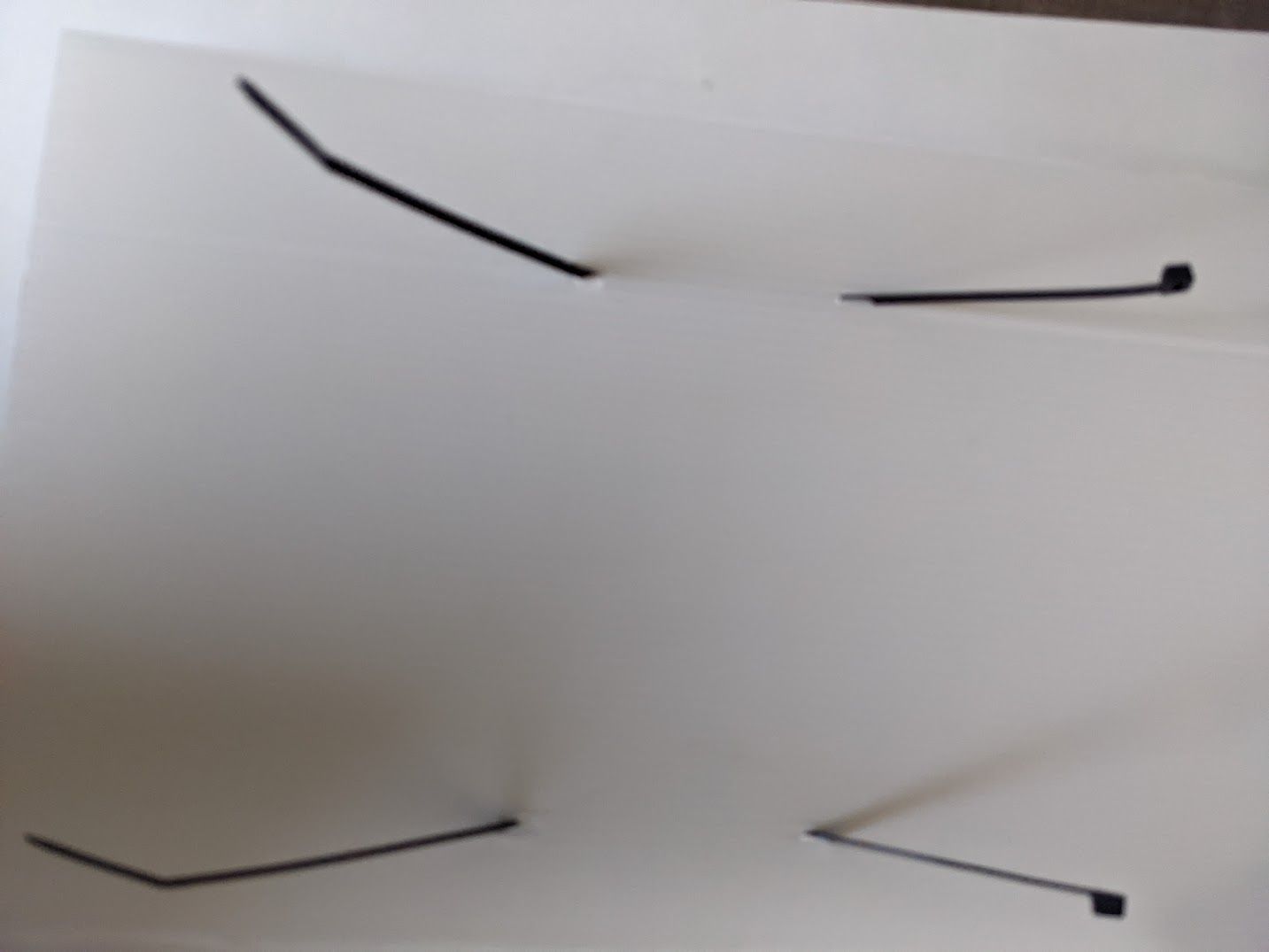
Thread zip ties through the holes. Now you can attach the sign to the pole, and the zip ties will be hidden on the front side, so it'll look neater.
Position one side of the sign on the plastic. Make sure you have enough space for the other side. Tape it carefully in place with clear packing tape. It's easiest to tape the middle part first and then the outside.
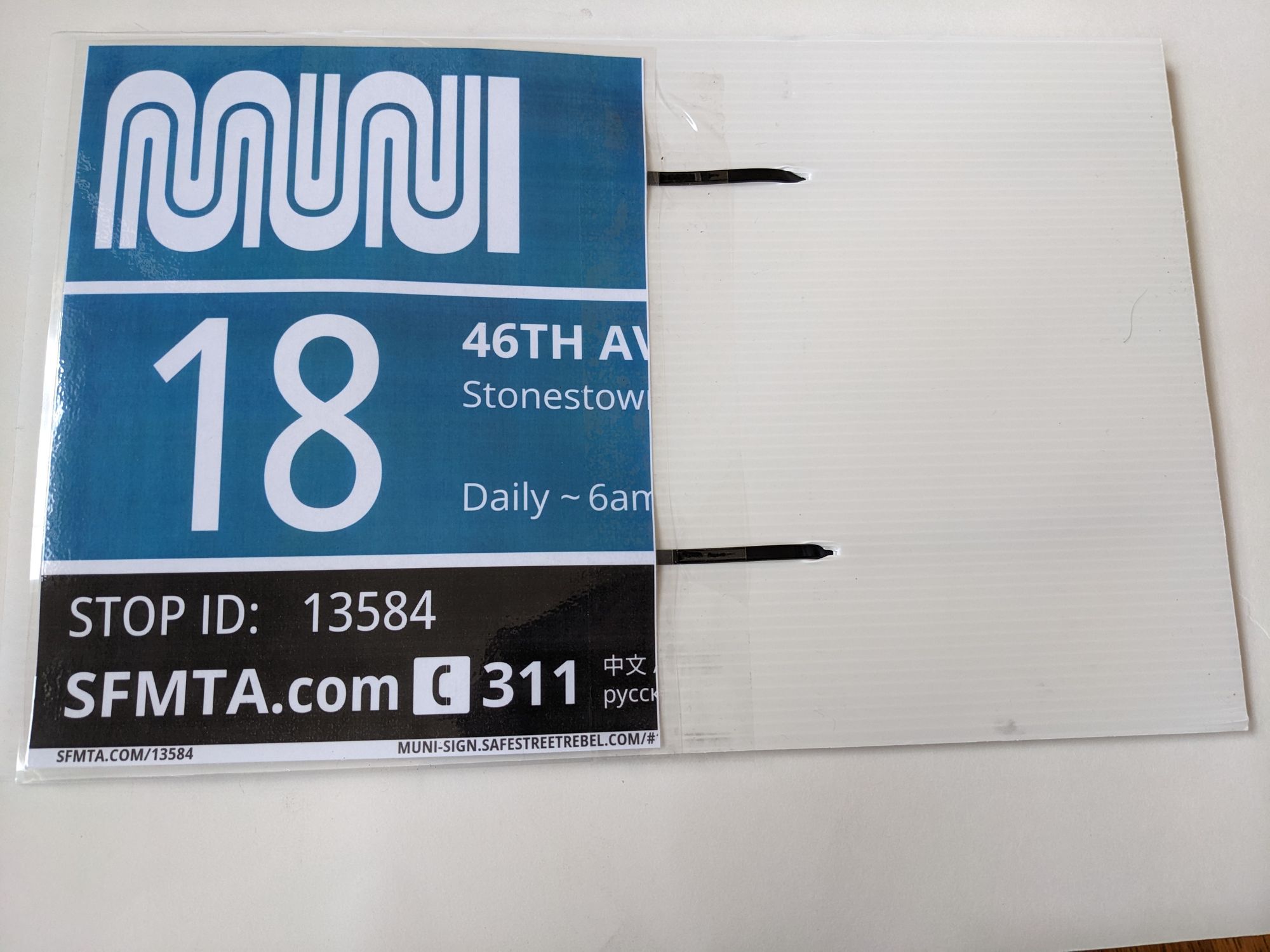
Then, do the same with the other side. Try to line them up as well as possible so that the seam isn't immediately obvious.
Step 6: Put up the sign
Bring something to trim the zip ties. If it's a large post, you'll probably need to chain more zip ties together. It can be helpful to do this in advance.
Note that zip ties of different lengths can't always be chained together because they also have different widths.
Double-check this is the correct stop for the correct sign.
Make sure the sign isn't covering up any existing information, and that it's clearly visible to people waiting for the bus.
Use zip ties to secure it at the top and bottom of the sign. Trim them so they look neat.
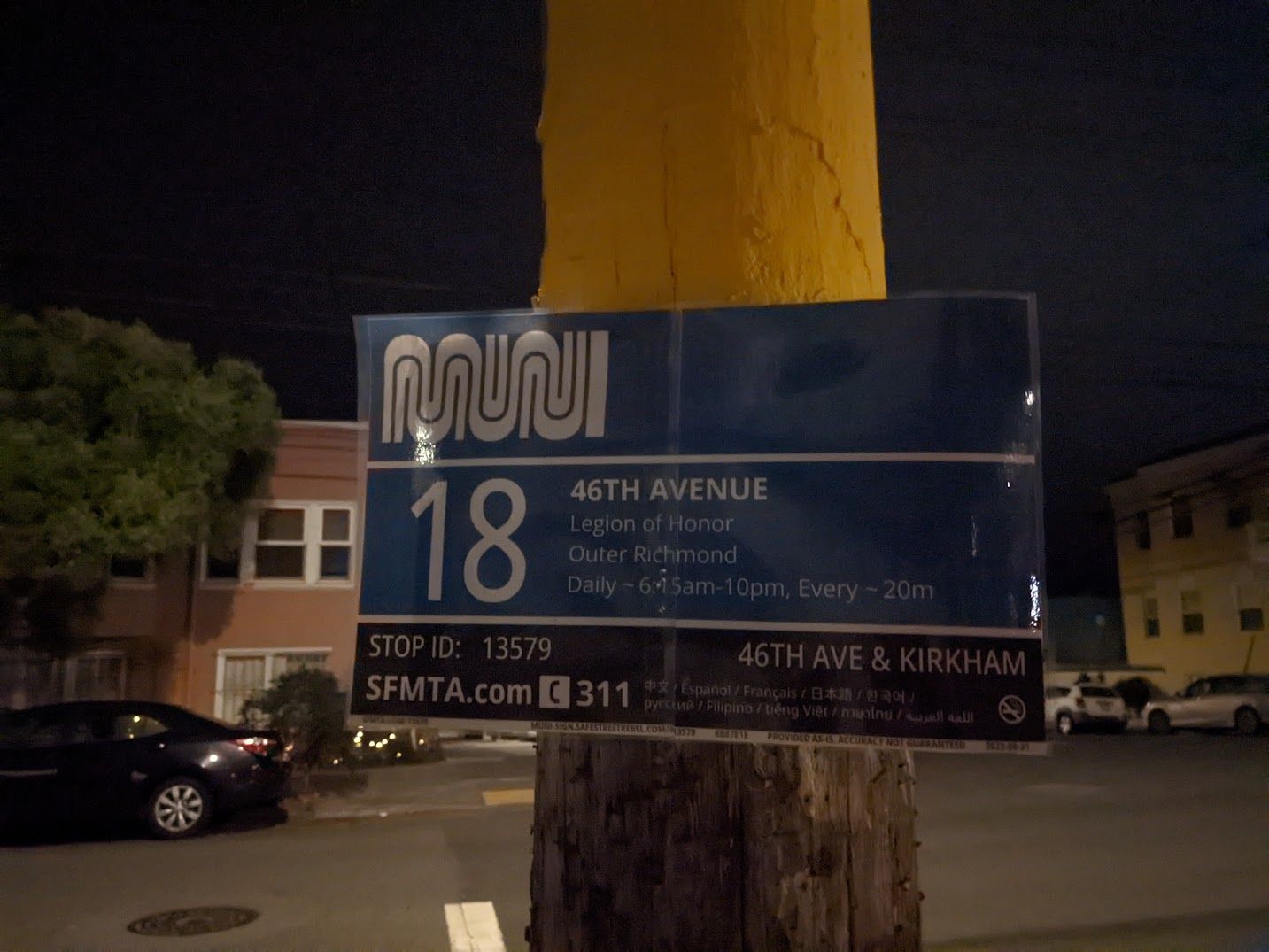
Conclusion
Congratulations, you've helped make the city a better and more accessible place. Take a picture of your new sign and tag us in it, @SafeStreetRebel on Twitter, if you like!